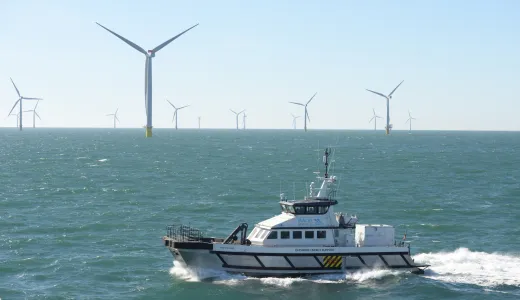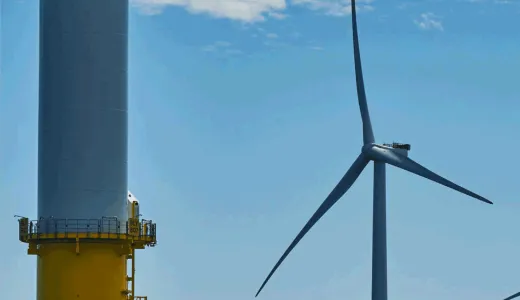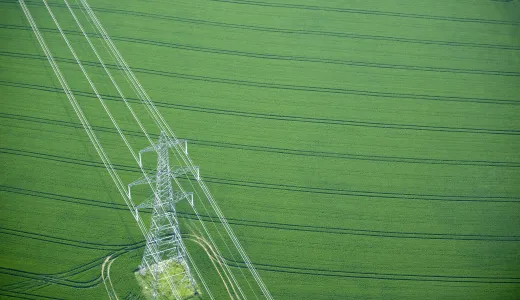The need for network reinforcement
East Anglia’s 400kV electricity transmission network was built in the 1960s. It was built to supply regional demand, centred around Norwich and Ipswich. With the growth in new energy generation from offshore wind, nuclear power and interconnection with other countries, there will be more electricity connected in East Anglia than the network can currently accommodate.
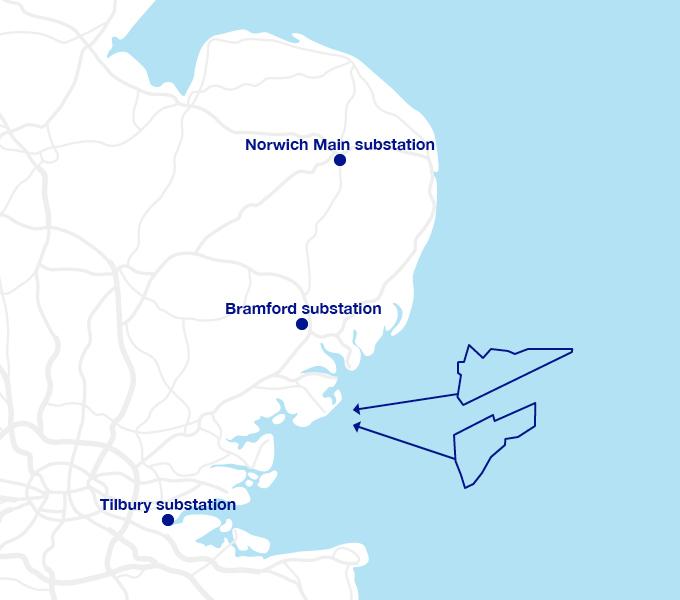
The existing network in East Anglia currently carries around 3,200 megawatts (MW) of electricity generation. Over the next decade we expect more than 15,000MW of new generation and 4,500MW of new interconnection to connect in the region.
Our existing power lines do not have sufficient capacity to accommodate this new generation. We are already carrying out work to upgrade the existing transmission network in East Anglia, however even with these upgrades the network will not be sufficient. East Anglia GREEN is a key part of our wider investment programme to upgrade our electricity transmission network in East Anglia to ensure we meet this future energy transmission demand.
East Anglia GREEN would also connect new offshore wind farms off the Essex coast to the electricity transmission network. Two offshore wind farms – the North Falls Offshore Wind Farm and Five Estuaries Offshore Wind Farm – are currently in development. If they are consented, both are expected to be operational by the end of the decade.
National Grid ESO leads an annual cycle which looks at how much energy needs to be carried on the network in the future and where network capability needs to be improved to accommodate that.
The overall effect of that process is to ensure that the right efficient, coordinated and economical proposals are brought forward to deliver what the country requires from the electricity transmission system in a way that represents best value to electricity consumers.
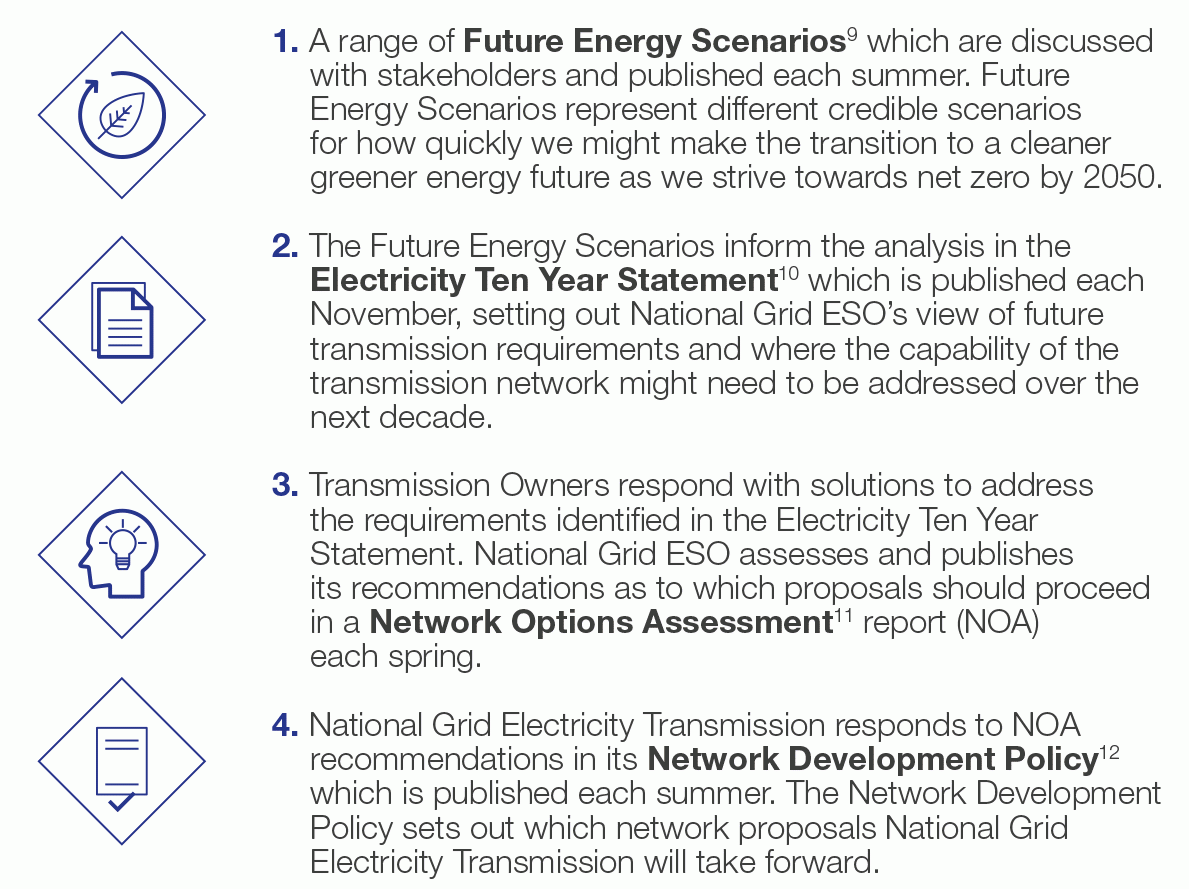
In planning and operating the network, transmission licence holders – onshore and offshore – are required by their licence to comply with the National Electricity Transmission Security and Quality of Supply Standard. These set out criteria and methodologies for planning and operating the network in Great Britain – in essence, minimum requirements designed to ensure secure and stable electricity supplies.
The need to reinforce the network between Norwich and Bramford (AENC in NOA) and between Bramford and Tilbury (ATNC in NOA) has been identified as critical to take forward in both the 2021 and 2022 editions of the NOA reports.
The 2022 edition of the NOA confirmed that Norwich to Tilbury is a critical network reinforcement to proceed in all Energy Scenarios. We confirmed in 2021, that we will be taking forward work to deliver the reinforcement identified in our Network Development Policy statement.
The Network Options Assessment (NOA): The NOA is an annual report published by National Grid ESO which outlines its recommendations for projects to take forward during the coming year. When a new edition of the NOA is released, National Grid Electricity Transmission will use this to identify where it needs to build new lines and will back check and review the need case for projects that are in progress.
The network today in East Anglia
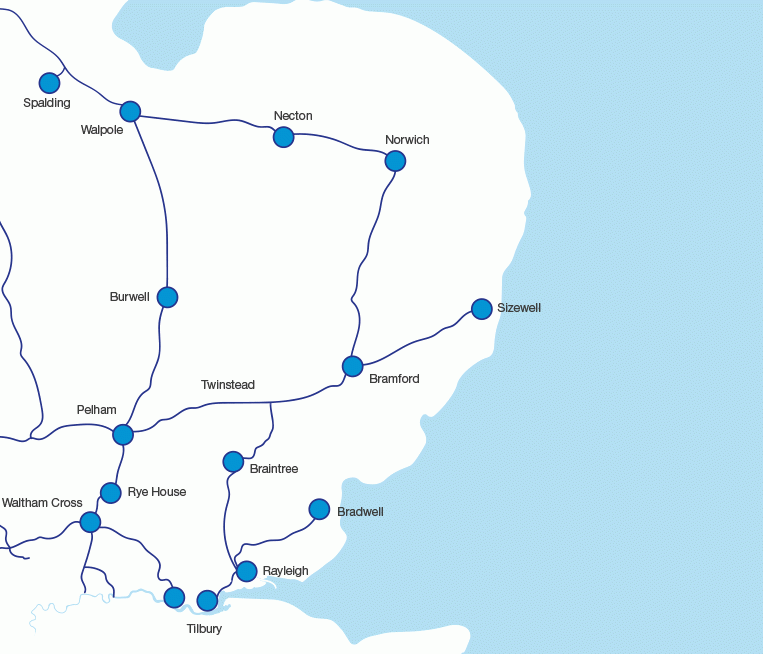
Like much of the high voltage electricity transmission network across the country, the network in East Anglia was largely developed in the 1960s. It was built to supply regional demand, centred around Norwich and Ipswich, and fed from our Bramford substation.
A large loop runs from Walpole in the north of the region to Pelham and Rayleigh/Tilbury in the south, via Norwich and Bramford. Two 400kV overhead lines connect Sizewell B, and an unenergised 132kV overhead line used to connect the now decommissioned Bradwell A nuclear power station.
Historically there was relatively limited generation and low consumer demand in East Anglia, when compared with other parts of the country. In recent years, peak demand for electricity in the region has fallen slightly – from a peak of 1,426MW in 2019 to 1,346MW in 2021.
Current generation and demand in East Anglia
To understand current and future demands on the electricity network, the concept of network boundaries is used. A boundary splits the system into sections and shows where there are high-power flows between parts of the network. When flows across a network boundary are forecast to be above the capability of the network, there are two options to manage this:
-
pay electricity generators on one side of the boundary to reduce the energy they produce (and in turn pay generators on the other side of the boundary to compensate for the shortfall). This then reduces the flows of electricity across the boundary. When National Grid ESO pay generators to do this, these are called ‘constraint payments’; and/or
-
increase the capability of the network to allow more electricity to flow.
At present, generation in the region currently totals 4,100MW. Most of this generation (3,160MW) is directly connected to our network and 940MW is connected via the UK Power Networks distribution network. We call the locally-connected generation ‘embedded’. This is shown in the table below.
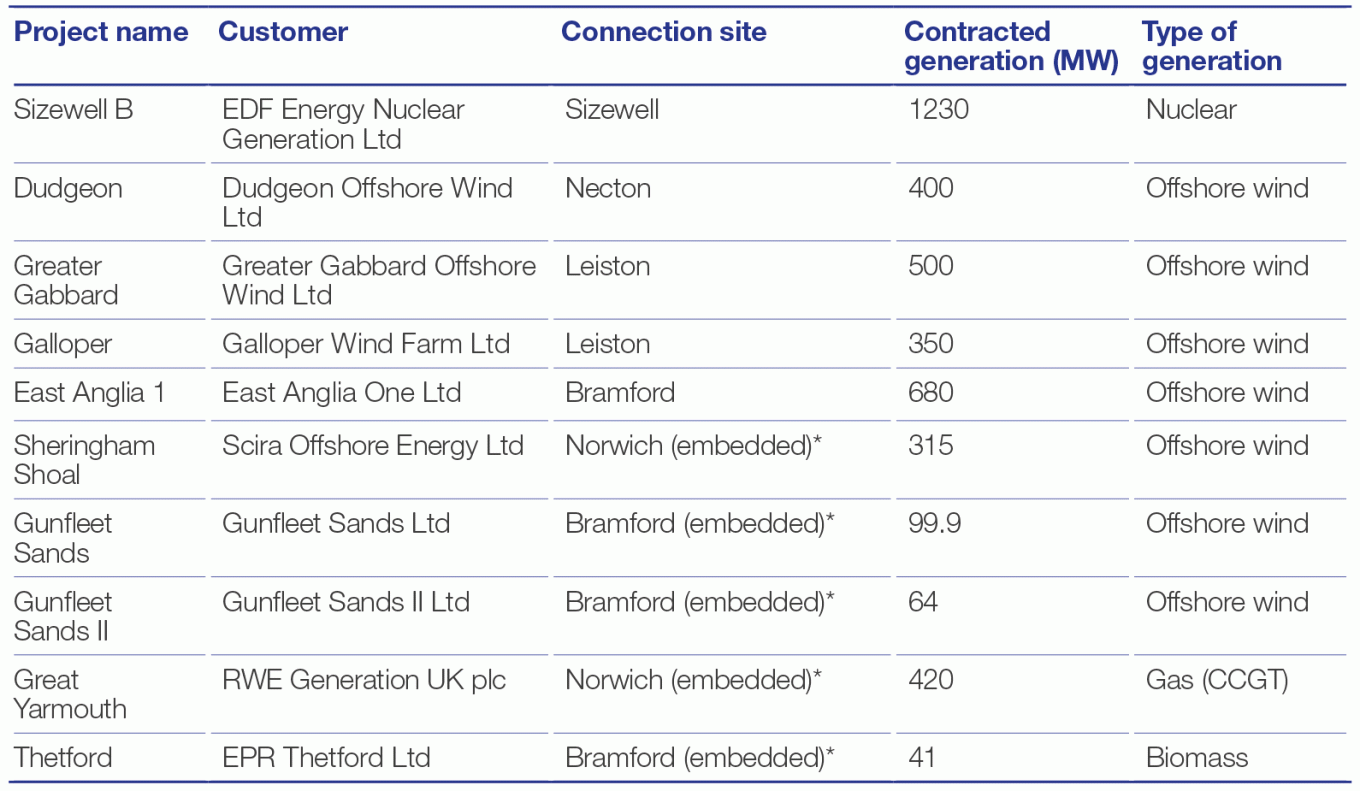
The Security and Quality of Supply Standard
The network is planned and operated under a set of standards designed to ensure there are no widespread electricity supply interruptions, even if two circuits are out of service.
Each line of pylons on the network carries two electrical circuits.
For example, if one circuit is switched out for planned maintenance and another is impacted by a fault at the same time, the Security and Quality of Supply Standard is designed to ensure:
-
electricity system frequency is maintained within statutory limits
-
no part of the network is overloaded beyond its capability
-
voltage performance stays within acceptable statutory limits
-
the system remains electrically stable.
National Grid ESO oversees the standards, and they are approved by a Security and Quality of Supply Standard panel and Ofgem.
Future generation and demand
While the network in East Anglia can accommodate the level of generation and demand that there is today, this situation will change over the next decade. New connections for new offshore wind and nuclear power generation projects and for interconnectors are expected into East Anglia by 2030. These are being constructed or expected into substations at Necton, Norwich Main, Bramford, Friston and Sizewell.
Additionally, agreements are in place with two offshore wind farm projects on the basis of their connection into the new East Anglia Connection substation (EAC).
National Grid has a duty to facilitate new connections and maintain a safe national transmission system.
Studies by National Grid ESO considered the capability of the existing network. They took into account the planned upgrades to existing circuits and the proposed Bramford to Twinstead Reinforcement. The assessments, in line with the analysis of credible Future Energy Scenarios, concluded that the existing high-voltage electricity network in East Anglia does not have the capability needed to reliably and securely transport all the energy that will be connected, while meeting the Security and Quality of Supply Standard (NETS SQSS).
To address this and meet its statutory duties, National Grid needs to reinforce the electricity network in East Anglia. The reinforcement is needed to allow power to be imported to, and exported from, East Anglia and to provide additional capability to allow power flows into and out of the south-east area to connect with areas of demand and interconnectors to Europe. This reinforcement is considered ‘critical’ in all Future Energy Scenarios.
Increasing the capability of the existing network
Before we consider building new parts of the network, we first must consider whether we can achieve more capability by upgrading and strengthening the existing network.
This can involve changing the conductors/wires on some of our existing overhead lines and adding smart power control devices to control the flow of electricity on parts of the network to transport it to where it is needed.
In East Anglia in the first half this decade, we are:
-
installing power control devices at key substations in the region – at Pelham, Rye House and Waltham Cross, to make more use of an existing route to the west of the region
-
increasing the voltage of a section of line from Waltham Cross south into London to 400kV to increase the capability of that part of the network into the capital
-
re-wiring existing overhead lines with conductors that can carry more power – for example on the existing overhead lines from Bramford to Braintree to Rayleigh to Tilbury, Twinstead and Pelham and between Norwich and Bramford.
Making these improvements will increase the capability of the existing network, but it is still insufficient to deliver the capability that National Grid ESO advises is required to deliver cleaner, greener energy to homes and businesses beyond the region in line with Government ambitions.
As National Grid ESO has outlined in the last two published NOAs, new reinforcements are needed in the region to deliver on the Government’s ambition to see 50GW of offshore wind connected by 2030.

The need for network reinforcement
Watch the video to hear why the network needs reinforcing here in East Anglia
